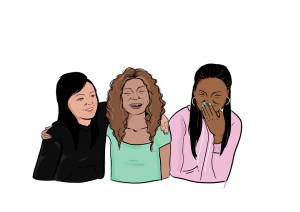
Photo by eirabirkhammer on Pixabay
I’ve been an instructor for most post-secondary institutions here in Manitoba since obtaining my Master’s degree back in 2011, but I’ve been away from instructing for the last five years. I return to instructing next week as I’ll be teaching an (all) online course for UCN, which I’m excited about.
When putting together my outline for that course back in November, I took the time to think about and list some student activities that would give them a break from listening to me “talk” at them at about 20 minute intervals. This was before this course started, so it was reassuring to read the questions in Chapter 10: “Who are the students?” “What kind of learners are they?” “What resources do I have to teach content?” and “How will I assess understanding?” I also found it useful to read the sections that discussed transmissive lectures and attention spans, and that most post-secondary instructors may not have background in teaching theory; but this doesn’t mean that they don’t practice the components of that theory (or theories).
I taught one online course back in 2011. I didn’t enjoy that very much despite having the course and (set) content laid out for me. I probably would have enjoyed it more if I was able to choose more of the content and assessment. I don’t like to assign group or discussion work as an instructor because as a learner myself that is not something I particularly enjoy (as an introvert); however, this course had a group wiki project attached to it so I was to oversee (assess) that component. One issue with online group work was that one student was usually doing all of the work, so it was quite difficult to address, especially as a new instructor.
In another professional context, I was a facilitator for teachers (PD), so I’d develop resources and workshops. Again, I didn’t want to “talk” at anyone for hours on end, I wanted it to be interactive, and I wanted to utilize technology, so I used blended learning (technology as an aid). A very simple experience with Blended learning, but I found it very useful for engaging participants. I’d use PPT visuals to assess prior knowledge before beginning a workshop, and participants would later be provided with the ‘answers’ to assess their own knowledge. I found this to be an excellent (and fun) way to start a workshop (session) as it set the tone for our learning.
Having said that, I’ve always tried to make classroom, face-to-face learning fun too. I’d do online scavenger hunts for artists/songs, which post-secondary students really loved, and it (again) seemed to set the tone for their interpretation/analysis of the lyrics later on. They were asked to go online to find an Indigenous artist who wrote and sang a song about the Buffalo. This activity led most students to this song.
Interestingly, what I noticed with that activity was that younger students would help older learners who maybe weren’t as tech/internet savvy. They’d pair up on their own at a computer (there was a lab in the classroom), and they’d have a lot of fun laughing (and learning) together, so even though at that time I had no conscious plan to have them practice skills they’d need in a digital age, they were doing it.
Ekosi.
